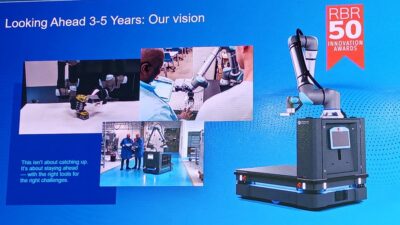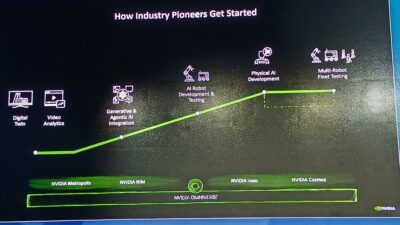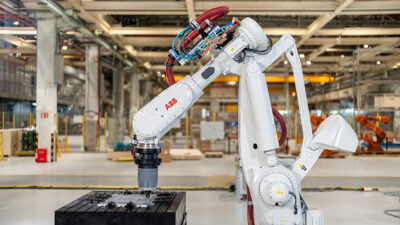IDTechEx forecasts that robotics in the agricultural market will reach $12 billion in sales by 2026, but the growth will be slow and gradual as robots gets smaller and cheaper.

Agricultural robotics can upend several commonly-held notions. Amongst them is the idea that big is better. In practice, this has translated into larger and more powerful agricultural machinery. This makes sense because a big machine amplifies the capabilities of the skilled driver, dramatically boosting its productivity. However, this conventional might experience a fundamental change now that the driver can be taken out of the equation.
The IDTechEx Research report "Agricultural Robots and Drones 2016-2026: Technologies, Markets, Players" focuses on how robotic technology will enter different aspects of agriculture such as how it will change the way farming is done, how it becomes the future of agrochemicals business, and how it will modify the way agricultural machinery is designed. IDTechEx Research forecasts that agricultural robots and drones will reach $12 billion in sales by 2026.
Tractors become fully autonomous
Agricultural vehicles have been at the forefront of developing and adopting autonomous navigation technology. Indeed, more than 320,000 tractors equipped with autosteer or tractor guidance technology will be sold in 2016 alone. This is expected to rise to 660,000 a year in 2026. These tractors use RTK GPS technology to autonomously follow pre-planned paths with cm-level accuracy.
This makes agriculture the largest adopter of autonomous navigation. Leading tractor companies have already demonstrated master-slave or ‘follow-me’ unmanned autonomous tractors or load carts. In these arrangements, a manned operator supervises the movement of the leader tractor. This technological evolution will further the notion that big is better because it further enables the productivity of the skilled driver via multiple slave or follower vehicles. This concept will be useful for large-scale crop field farming.
Fully and unmanned autonomous tractors will be the next evolutionary step. Multiple semi-commercial prototypes have already been demonstrated by leading agricultural machinery companies. The technical challenges are largely resolved. The tractor is equipped with a variety of overlapping sensors such as lidar, radar, and sonar to provide autonomous navigation in the absence of GPS signal together with collision avoidance.
Technology costs are currently high, but the largest hurdles are the lagging regulatory framework and the farmers’ desire to stay in charge. These will all inevitably change as the farming population continues to grow older worldwide. IDTechEx Research forecasts sales of fully autonomous tractors will start only from 2021/2022 onwards and reach more than $200m in 2026.
Agricultural vehicles transfigured
The advent of mobile agricultural robots will create the notion that small, light and slow is good. In this vision, few heavy, fast, large and manned tractors become replaced by, or complemented with, many light, slow, small and unmanned robots.
Here, the lightness means no soil compaction, which increases the useful land in each farm. Slowness means more attention paid to each plant therefore better data and more precise plant-specific action, and potentially low costs.
Cost is a critical parameter because large and fast machines are more productive. This means that agricultural robots will need to be much cheaper to make economic sense. This requirement will limit mainstream adoption in the medium-term. The costs are high because these mobile robots require multiple sensors to provide safety and autonomy even in the absence of GPS signals. The report also suggests that farmers do not yet trust them and are not willing to pay extra. This means some models are being stripped down to the bare minimum required with simple features such as even end-of-row navigation being removed.
Technology immaturity sets the business model
The machines are still not completely reliable despite the technology, at the discreet component and software level, being ready, and accessible. This manifests itself in the business models of many companies seeking to commercialize such or similar robots. They become service providers so that the farmers do not bear the entire risk burden and so that skilled operates run the show in case there is a technical fault causing downtime.
Farmers turn revolution into evolution
All these will change in the course of the coming decade. Despite being renowned for conservatism, farmers often do take in technology. This is evident in global statistics showing how output has grown despite falling employment in the agricultural sectors, which is partly due to the spread of mechanization in farming.
The real effect of this conservatism is that revolutionary technologies eventually become evolutionary ones. The change will be gradual technologically and commercially. As the technology improves, the value proposition will have to be proved at every incremental step.
However, only a few field trials have taken place and here the experimental clock is limited by harvest seasons, which slows down the adoption process. Also, many agricultural robots today work well in specially constructed environments, suggesting that perhaps full-scale adoption requires a modification in the way farms are laid out. This will proceed at a slow rate, which will help turn the revolution into an evolution.
Dr. Khasha Ghaffarzadeh, research director, IDTechEx. Edited by CFE Media. See more Control Engineering robotics stories.



